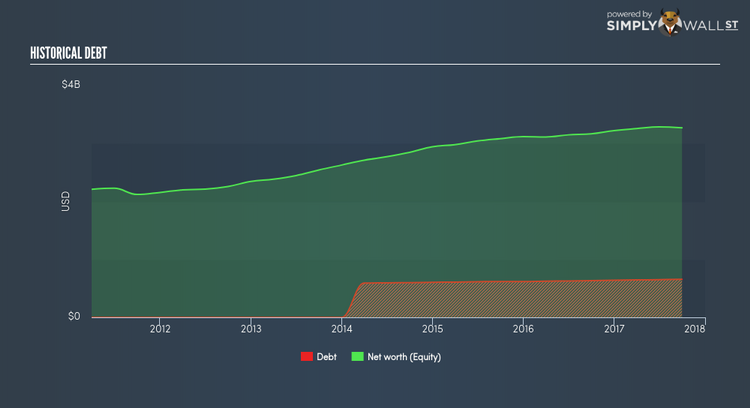Akamai Technologies Inc (NASDAQ:AKAM): Time For A Financial Health Check

The size of Akamai Technologies Inc (NASDAQ:AKAM), a $11.14B large-cap, often attracts investors seeking a reliable investment in the stock market. Doing business globally, large caps tend to have diversified revenue streams and attractive capital returns, making them desirable investments for risk-averse portfolios. But, the key to their continued success lies in its financial health. I will provide an overview of Akamai Technologies’s financial liquidity and leverage to give you an idea of Akamai Technologies’s position to take advantage of potential acquisitions or comfortably endure future downturns. Note that this information is centred entirely on financial health and is a high-level overview, so I encourage you to look further into AKAM here. Check out our latest analysis for Akamai Technologies
How does AKAM’s operating cash flow stack up against its debt?
AKAM has sustained its debt level by about $640.1M over the last 12 months – this includes both the current and long-term debt. At this stable level of debt, the current cash and short-term investment levels stands at $837.0M for investing into the business. On top of this, AKAM has generated $866.3M in operating cash flow in the last twelve months, resulting in an operating cash to total debt ratio of 135.34%, meaning that AKAM’s operating cash is sufficient to cover its debt. This ratio can also be a sign of operational efficiency as an alternative to return on assets. In AKAM’s case, it is able to generate 1.35x cash from its debt capital.
Can AKAM pay its short-term liabilities?
At the current liabilities level of $374.6M liabilities, it appears that the company has been able to meet these commitments with a current assets level of $1,309.9M, leading to a 3.5x current account ratio. Though, a ratio greater than 3x may be considered as too high, as AKAM could be holding too much capital in a low-return investment environment.

Does AKAM face the risk of succumbing to its debt-load?
With a debt-to-equity ratio of 20.08%, AKAM’s debt level may be seen as prudent. This range is considered safe as AKAM is not taking on too much debt obligation, which may be constraining for future growth. We can check to see whether AKAM is able to meet its debt obligations by looking at the net interest coverage ratio. Ideally, earnings before interest and tax (EBIT) should cover net interest by at least three times. For AKAM, the ratio of 356.16x suggests that interest is comfortably covered. It is considered a responsible and reassuring practice to maintain high interest coverage, which makes AKAM and other large-cap investments thought to be safe.
Next Steps:
AKAM has demonstrated its ability to generate sufficient levels of cash flow, while its debt hovers at an appropriate level. Furthermore, the company exhibits an ability to meet its near-term obligations, which isn’t a big surprise for a large-cap. I admit this is a fairly basic analysis for AKAM’s financial health. Other important fundamentals need to be considered alongside. You should continue to research Akamai Technologies to get a more holistic view of the stock by looking at:
1. Future Outlook: What are well-informed industry analysts predicting for AKAM’s future growth? Take a look at our free research report of analyst consensus for AKAM’s outlook.
2. Valuation: What is AKAM worth today? Is the stock undervalued, even when its growth outlook is factored into its intrinsic value? The intrinsic value infographic in our free research report helps visualize whether AKAM is currently mispriced by the market.
3. Other High-Performing Stocks: Are there other stocks that provide better prospects with proven track records? Explore our free list of these great stocks here.
To help readers see pass the short term volatility of the financial market, we aim to bring you a long-term focused research analysis purely driven by fundamental data. Note that our analysis does not factor in the latest price sensitive company announcements.
The author is an independent contributor and at the time of publication had no position in the stocks mentioned.
